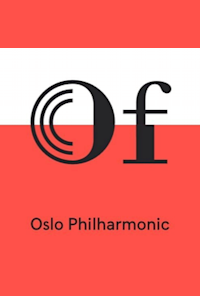Brahms and Buene
What happens when Brahms’ Piano Concerto No. 2 enters into a dialogue with Eivind Buene’s new music and ideas?
The latter curates this unique concert where his own writing is weaved into the movements in this great Romantic work. Standing Stones examines the concert hall as arena and music history as record collection by eighty years of recordings of the same two bars from the Brahms concerto merging with the overall sound. Buene is also curious about the relationship between text and music, a theme he addresses in a new work, composed for the occasion.
Johannes Brahms (1833-1897) is one of the giants in music history whose works have been recorded and performed over and over again during the course of the last century. His Piano Concerto No. 2 (1881) is, like his other solo concertos, as much a great symphonic work as well as a bravura concert piece, with its four massive movements. Still, the soloist faces great technical challenges which are only mastered by the very best, such as the cadenza which appears just a few bars into the first movement.
This concerto, and its lengthy history of recording, has also long fascinated Eivind Buene (b. 1973) and in Standing Stones for Symphonic Hall with Orchestra and Electronics (2010) he makes use of various “samples” of the same two bars from more than 80 years of recordings of the work. These constitute the electronic sound world which fills the concert hall and becomes a part of the whole. In the programme’s second work, a world premiere, Buene uses an actor who, together with the symphony orchestra, examines the relationship between text and music. Buene is a writer himself, and an extract from his novel One Man Orchestra (Cappelen Damm, 2010) fits the occasion rather well:
For there are certain moments in music history which strike one in more profound ways than others. There are some works one loves, and some interpretations of these works one places above other interpretations. There are parts, chords and phrasings which permeate one, become part of one’s body, and which shine with a particular kind of light. The pull towards these moments is the love itself in being a music lover, muses Arvid Pettersen. Only now has he come to realise that many of his own moments have to do with slowness. And in Brahms’ second piano concerto there are moments which for him appear to be the very embodiment of slowness. There is a moment where not only the work goes into slow-motion, almost to the point of being stationary, but where music history itself seems to pause in order to draw a breath, enjoy the view and perhaps search for new possibilities within the landscape in sight. The Great Moment happens in the third movement - the Andante - where the piano makes its entrance after the singing cello voice has set the scene for a meditation on slowness and tenderness, after the passion of the first two movements. Arvid Pettersen cannot count the evenings he has fallen asleep, accompanied by a dream image of himself, in Oslo Concert Hall, with an enormous Steinway in front of him and the Oslo Philharmonic Orchestra behind him, the conductor with raised arms while the strings die away, everyone waiting for him to strike those redemptive chords.
We look forward to welcoming you to an intriguing and unique concert experience!
